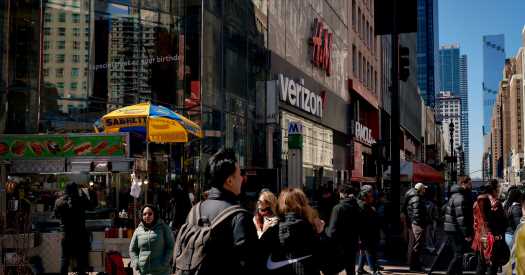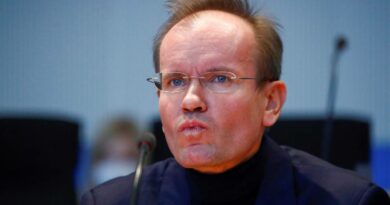The Fed’s Preferred Inflation Gauge Cooled Notably in February
The measure of inflation most closely watched by the Federal Reserve slowed substantially in February, an encouraging sign for policymakers as they consider whether to raise interest rates further to slow the economy and bring price increases under control.
The Personal Consumption Expenditures Index cooled to 5 percent on an annual basis in February, down from 5.3 percent in January and slightly lower than economists in a Bloomberg survey had forecast. It was the lowest reading for the measure since September 2021.
After removing food and fuel prices, which are volatile month to month, a “core” measure that tries to gauge underlying inflation trends also cooled by more than expected on both an annual and monthly basis.
The fresh data provides the latest evidence that inflation has turned a corner and is decelerating, though the process is gradual and bumpy at times. And the report is one of many that Fed officials will take into account as they approach their next interest rate decision, on May 3. Central bankers are watching how inflation, the labor market and consumer spending shape up. They also will be closely monitoring financial markets and credit measures to get a sense of how significantly recent bank failures are likely to weigh on lending, which could slow down the economy.
Fed officials have raised rates rapidly over the past year to try to rein in inflation, pushing them from near zero a year ago to just below 5 percent this month. But policymakers have suggested that they are nearing the end, forecasting just one more rate increase this year. Jerome H. Powell, the Fed chair, hinted that officials could stop adjusting policy altogether if the problems in the banking sector weigh on the economy significantly enough.
“In assessing the need for further hikes, we’ll be focused on incoming data and the evolving outlook, and in particular on our assessment of the actual and expected effects of credit tightening,” Mr. Powell said at a news conference after the Fed’s latest rate decision last week. The central bank raised rates by a quarter-point at that meeting.
But inflation remains unusually rapid: While it is slowing, it is still more than double the Fed’s 2 percent target. And the turmoil at banks seems to be abating, with government officials in recent days saying that deposit flows have stabilized.
Officials speaking this week have suggested that they might need to do more to wrangle price increases, and have pushed back on market speculation that they could lower rates this year.
“Inflation remains too high, and recent indicators reinforce my view that there is more work to do,” Susan Collins, president of the Federal Reserve Bank of Boston, said at a speech on Thursday. Ms. Collins does not vote on policy this year.
Friday’s report also showed that consumer spending eased in February from the previous month. A measure of personal spending that is adjusted for inflation fell by 0.1 percent, matching what economists expected. But the data was revised up for January, suggesting that consumer spending climbed more rapidly than previously understood at the start of the year.
Source: Read Full Article


